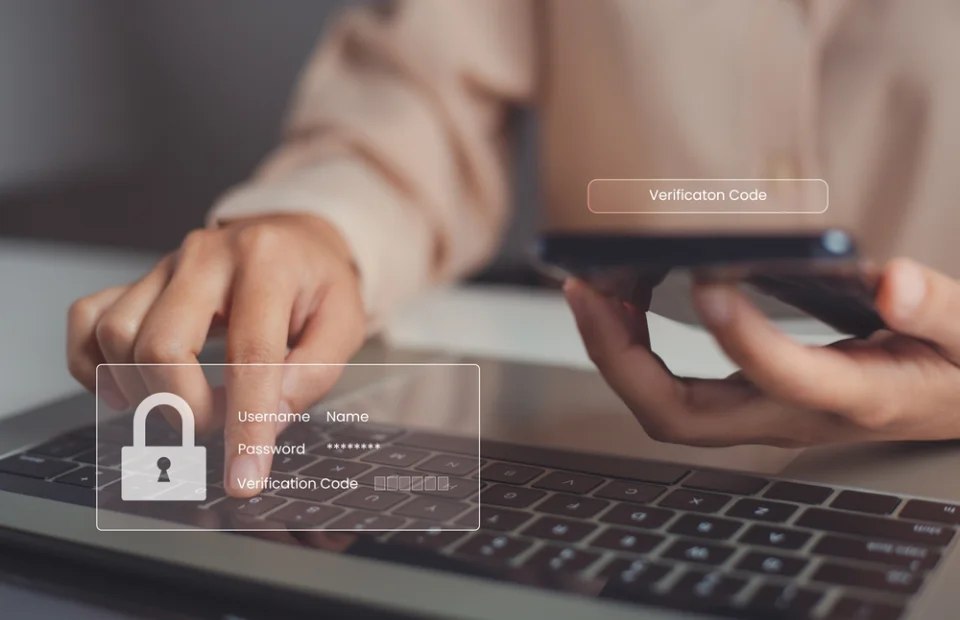Have you ever wondered what magical OTP(One-time password) that pops on your apps is !? It’s like a secret code that unlocks a world of digital amazement!
How (OTP) One-Time Passwords Work?

In this tech era, technology and gadgets are changing our daily lives completely. All the users in this digital world primarily work online. So, our security matters a lot. Let’s talk about the two-step verification.
We always want our homes, offices, cars, motorcycles, or anything secured. But have you ever focused on your online security? No!
Yes, guys, we always try to keep simple passwords for convenience. This is not a secure approach; attackers can easily crack it. So, here comes the two-step verification. Consider this One-Time Password like a magical lock whose fundamental changes after every few minutes. This key can be used only once.
This is an extra layer of security and is widely spreading in today’s world.
One-Time Password Delivery Procedures

The OTP code changes with time. It can be generated in multiple different ways. It can be caused by SMS, email, or any app installed on your mobile phone for the OTPs. Come on, explore these methods.
1. SMS-Based OTP Delivery
The SMS-based OTP delivery is like your personal messenger that sends a special code straight to your unique phone number.
It is a hidden key that ensures your only access to the accounts. It adds an extra superb layer of security and guard for your digital kingdom!
2. Email-Based OTP Delivery
Email-based OTP delivery is a message that comes in your inbox, carrying a unique code every time just for you!
By using that OTP, you can access your accounts. This OTP adds a trusted layer between you and the accounts you use that generates the OTP with a sprinkle of technology and a dash of security. Next time you see an OTP, quickly understand that it is just for your extra protection.
3. Mobile Applications for OTP
When we talk about mobile applications for OTP, there are a few pretty popular apps. These are:
- Google Authenticator
- Authy
These are the two apps that generate a One-Time Password for the authentication of your accounts. They sync with your accounts and generate the One-Time Password for added security. The shortcodes provided by these websites are expired after a short time. These apps are a more secure option than the SMS-based OTPs. Give them a chance and secure your digital adventures secured!
Benefits of One-Time Passwords

There are multiple benefits of OTPs. Some of these are listed as follows:
- It adds an extra superb layer of security to the accounts you access, which means a two-step authentication.
- Every time you attempt to get an OTP code, a unique code is generated.
- It protects against any unauthorized access and saves you from the evil intentions of hackers.
- It is a bonus safety to protect yourself from the hackers.
- It enhances the overall safety of your online access to different websites.
Limitations of One-Time Passwords

As One-Time Password offers excellent security, it also has some limitations. These are as follows:
- It would help if you were dependent on additional apps for the generation of the OPTs.
- Sometimes, the OPT can be delayed or failed, especially in SMS-based OTPs.
- Attacks can happen if the OPTs are not correctly implemented.
- The user can rarely get offended by applying the One-Time Password at every login attempt.
- It provides limited protection against physical attacks.
OTP Implementing One-Time Passwords

Time Password OTPs can be implemented both in websites and apps. They have an almost identical procedure for both. Let’s explore where we get the difference in implementing One-Time Password in Web and App.
One-Time Password in Web Applications
To create a One-Time Password in web applications, the first step is to choose an OPT generation method. There are multiple methods available, such as TOTP and HOTP.
After selecting the method, the second thing is to create a random secret key for each user during the registration process. Once the key is generated, it is stored securely on the server. The One-Time Password is calculated using this secret key and the current timestamp. After creating the key, it is transferred to the user through any preferred channel.
In the third step, we create a One-Time Password field on our website. When the user enters the code in that field and submits it. The One-Time Password is verified according to the secret key. It checks whether both OTPs are the same or not. If they are the same, the access is granted.
One-Time Password in Mobile Applications
In mobile applications, the first step is the same. We have to choose a method for creating a One-Time Password. The technique can be any of TOTP or HOTP.
Here, in the second step, the app, during the user registration or on setting up an app, generates a secret key. This key is then securely stored in our device. We have to use the TOTP/HOTP library in our mobile to generate a One-Time Password code. Then, the One-Time Password is displayed to the user within the app, and the user enters it when required.
In the third phase, the API is implemented on the server to verify the code provided by the mobile app. The user’s secret key and their account are stored on the server. Generate the expected One-Time Password using the stored private key and compare it with the received code when the mobile app sends a code to the server. Access is given if they are the same.
Best Practices for Maximizing One-Time Password Security

Don’t share your OTP
Your OTP is like a secret code that only you should know. It would be best if you didn’t share it with anyone; it’s for your eyes only. Another person can access your sensitive data if you share your One-Time Password. Don’t share it even if it has expired.
Protect Your Phone
If your app uses a One-Time Password, ensure your phone is safe with a PIN, fingerprint, or face recognition. This way, even if your phone is lost, your accounts stay secure.
Know the basics of One-Time Password
Know the basics of how One-Time Password works. This knowledge will help you use them securely and recognize phishing attempts.
Multi-Factor Authentication
Consider using a One-Time Password along with your password for added security. You’re like having a double lock on your door.
Don’t Try Too Many Times
The One-Time Password may lock you out if you enter it incorrectly more than once. So, take your time and join it correctly.
Pro Tip
It is easy to set up the Google Authenticator App if you install it on your Android or Apple phones. There are also many security tokens available in the market. You can configure these pen drives. Once you configure it, you can log in to your system once you insert the configured pen drive.
Conclusion
It would help if you use websites that offer two-step authentication, whether it is Twitter, Gmail, Outlook, different apps, or any banking website. Everything is done digitally. So to secure your sensitive information from unauthorized persons you must need a One-Time password. It enhances your security because it changes every time. The one-time password is used only for one communication. It is the most effective way to encrypt our sensitive information which is unreadable for any third person.
Frequently Asked Questions on One-time Password (OTP)
How is a One-Time Password different from a regular password?
One-Time Password is a time password is valid for 30 to 60 seconds, whereas a regular password is a permanent password that you can use anytime.
Can I use the same One-Time Password multiple times?
No, it can be used only once.
Are one-time passwords really secure?
Yes, because they are unique for each session.
Can I disable the One-Time Password if I find it inconvenient?
Yes, In many cases, you can disable One-Time Password if you find it inconvenient.





